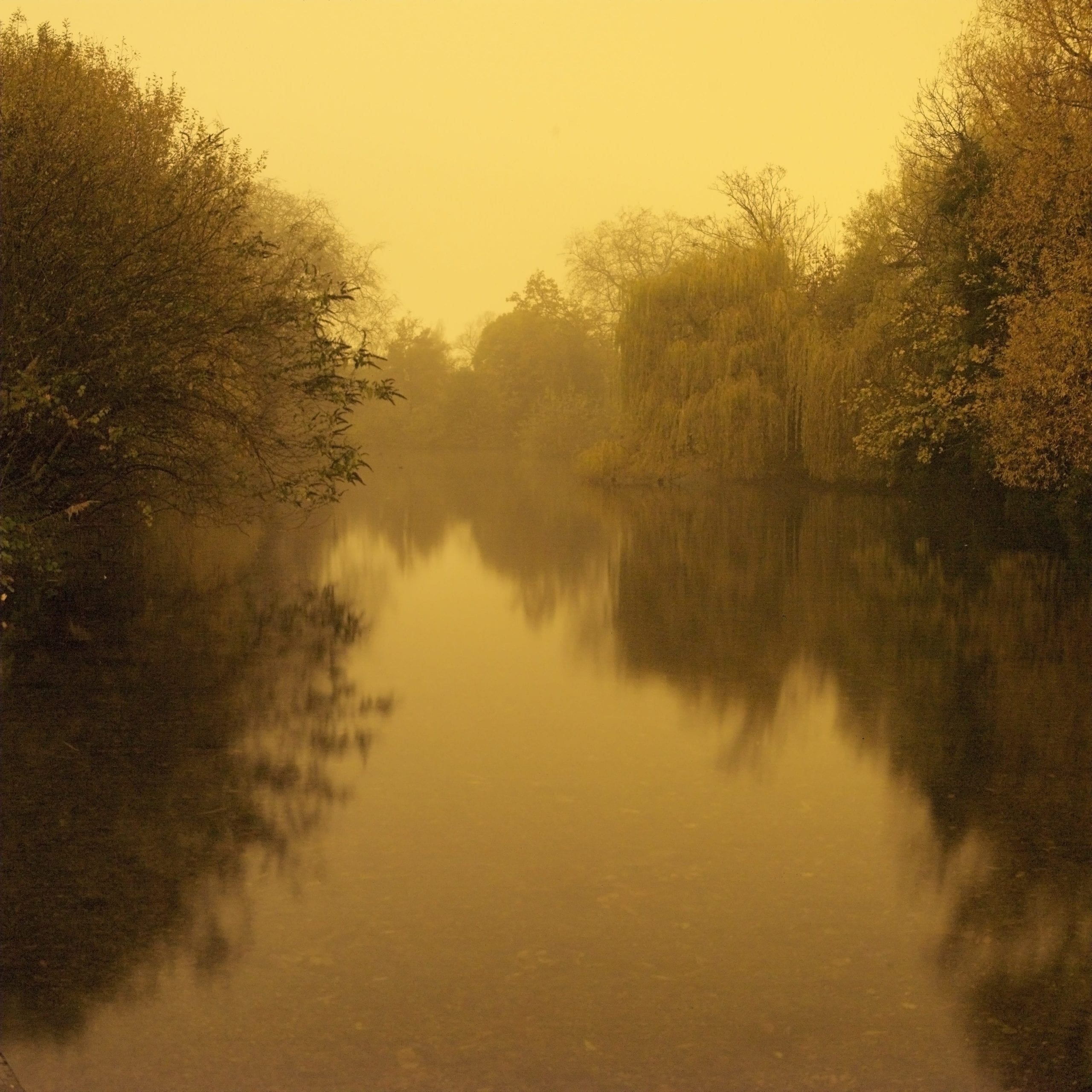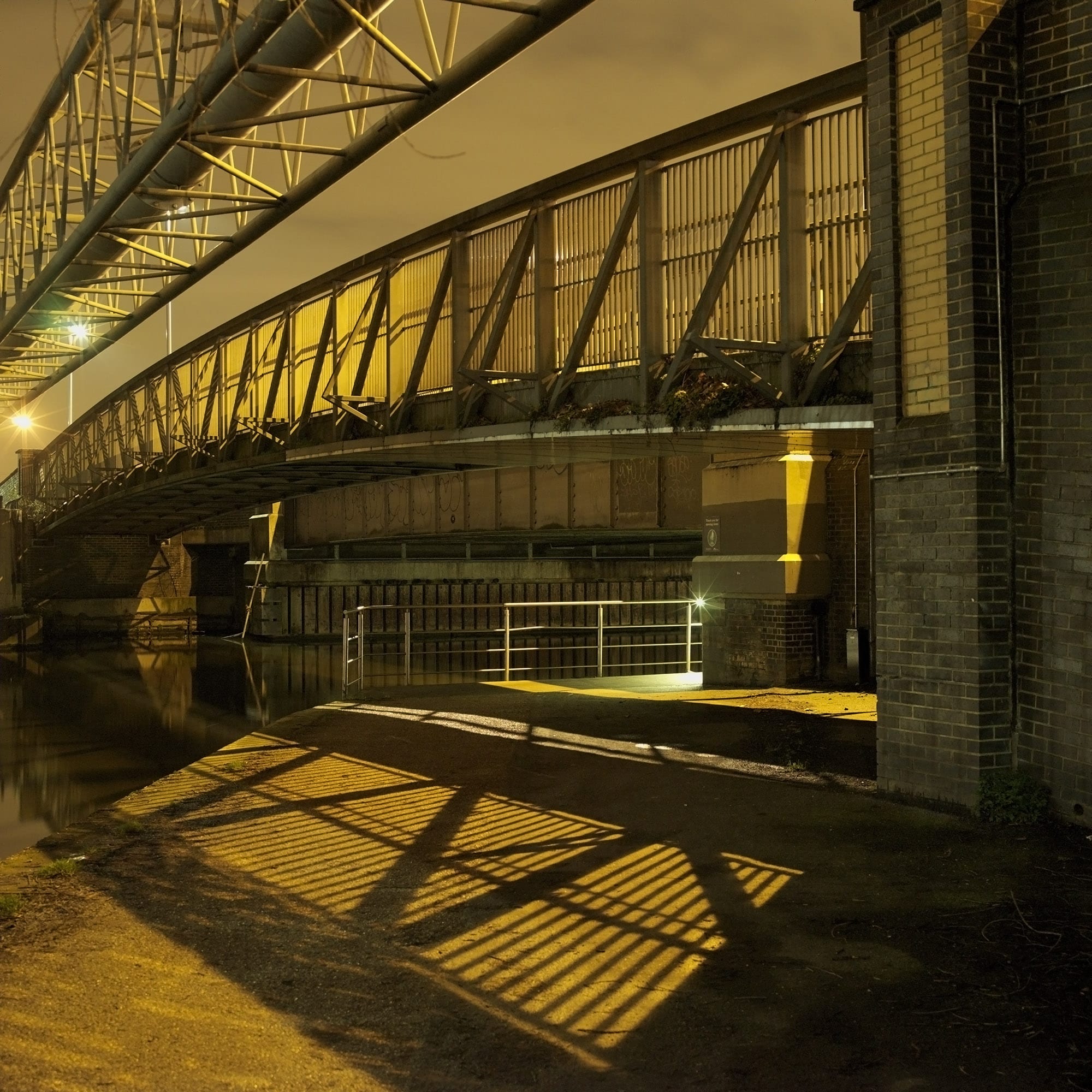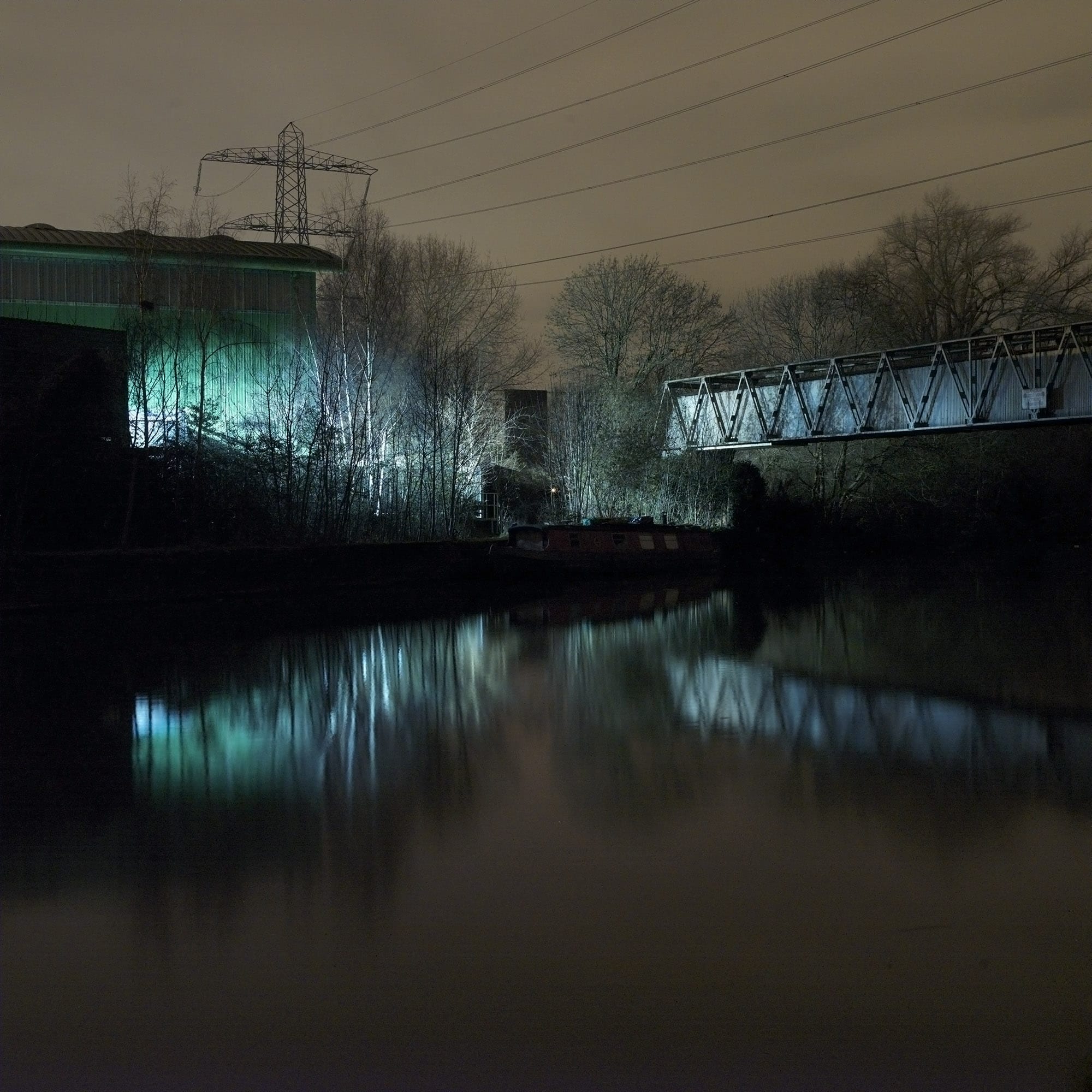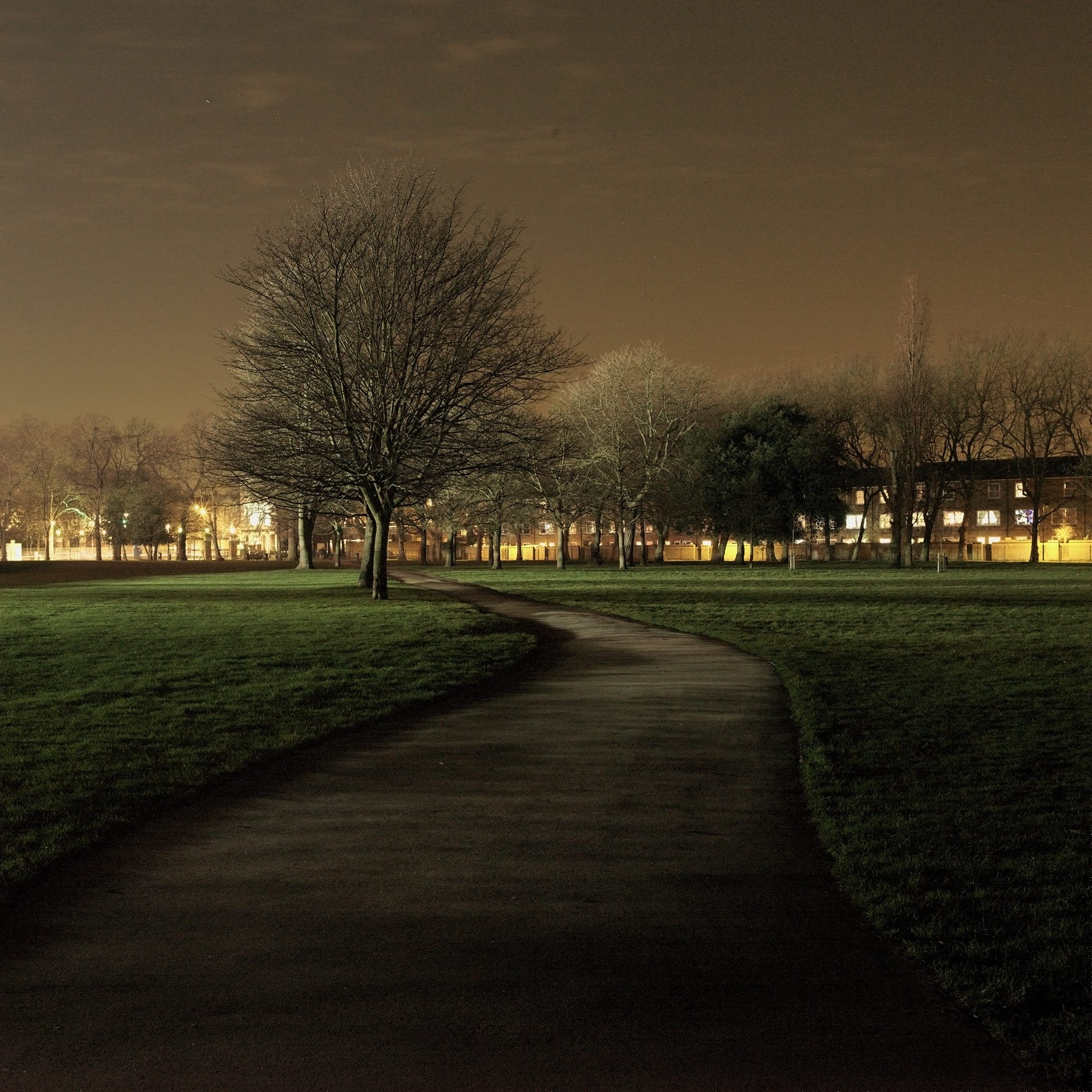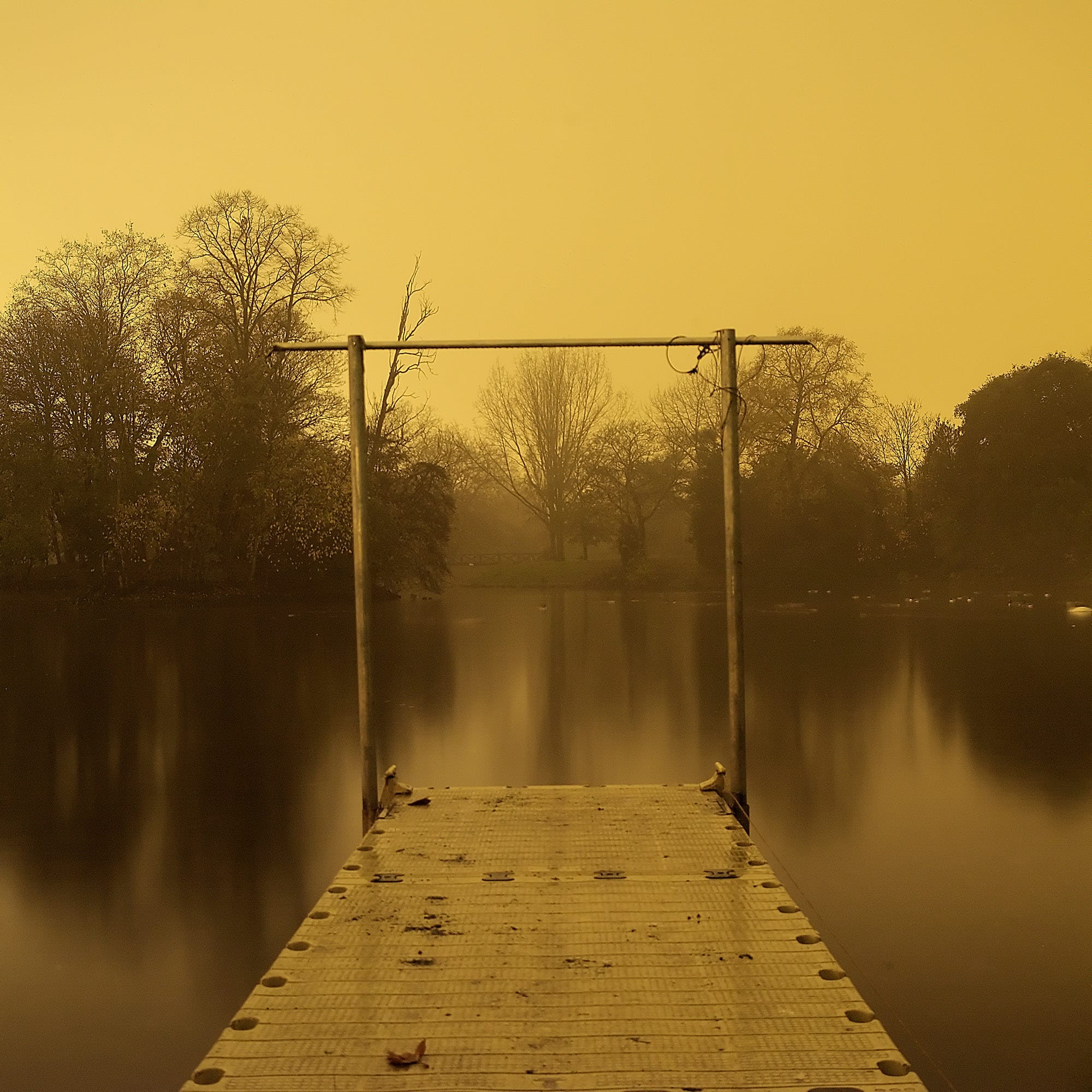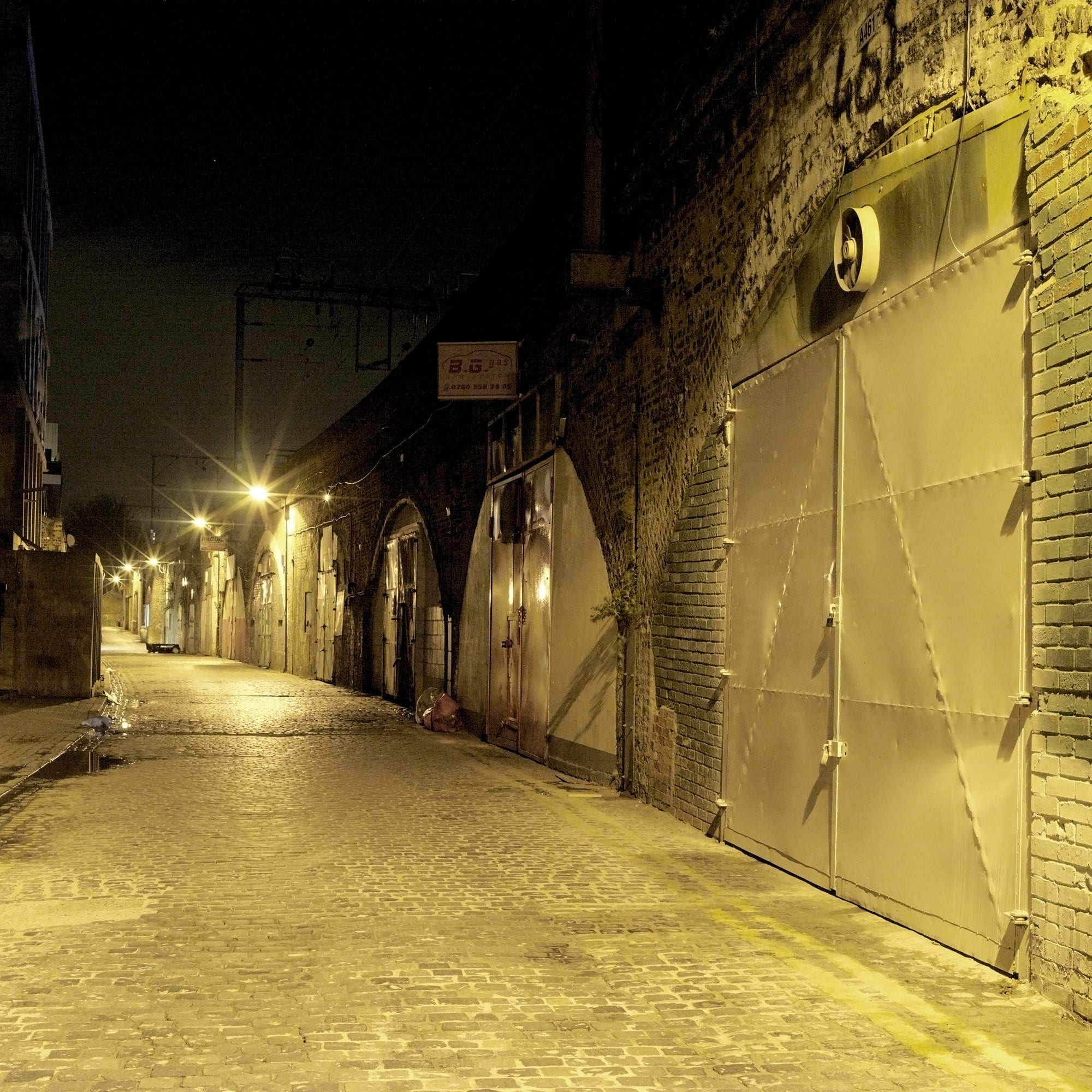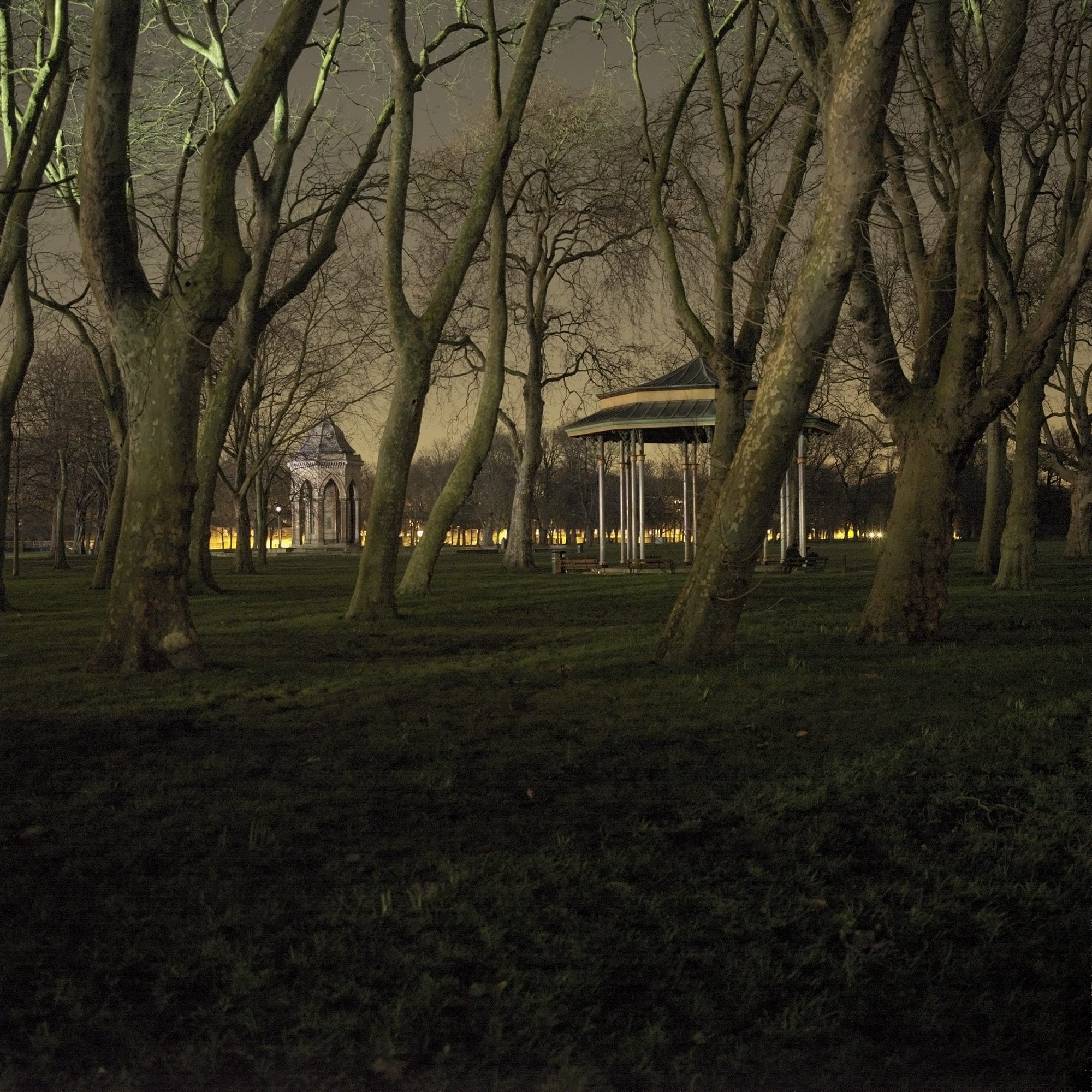From the hulking corpses of industry to serenely flowing canals to verdant parks, David George’s Hackney By Night captures a timeless, abandoned and eerie urban landscape, unfamiliar even to long-term residents. His photographs are accompanied by a short story by Karen Falconer: cryptic fragments of text that add equal doses of context and mystery.
I met David on a rainy winter’s night in the beating heart of Hackney, eager to decipher the thinking behind a most cryptic collection.
“Dogs”, he answers.
“I have dogs and that means I explore a lot. I discovered that at night Hackney is a different world. What I wanted was to take the reader on a gentle meander through the night, to feel like they’d have a bit of a dream.”
These pictures make the urban look bucolic, a vision of the ‘broken pastoral’; landscapes that only exist as a result of industrialisation. What was there before has been destroyed, but what replaces it has its own beauty.
“I wanted to emphasise how much water there is in Hackney,” George says. “The name Hackney means ‘an island in the marsh’- that’s what it was originally. People don’t realise how damp this place is; go anywhere around here and you’ll come across canals, lakes, streams.
“But we’re at the tipping point,” he says. “Lots of the places in the book are on the brink of becoming something else. But that’s the urban story – everything changes. I’m not lamenting that process, I’m recording it.”
The pictures are marked by their radioactive yellows and greens, giving them a distinctly woozy quality. How does he achieve this?
“It’s the pallor of the sodium street lights,” he says. “If you work with an unbroken sky, it reflects all that amber back down, whereas, with a clear sky, you get blues and greens. If you work with a broken cloud you get lovely sculpted clouds with bits of blue poking through. It’s the cloud cover that dictates the pallor of what you’ve got, what the cloud cover is.
“The very low light levels mean you never quite know what you’re going to get, and I’m often surprised by what these long exposures produce,” George says. “Occasionally, I might paint the foreground with a torch on a long exposure, but aside from that, and a bit of noise reduction, they’re pretty honest pictures – right out the back of the camera.”
Although Hackney is a bustling metropolitan borough, common to all the pictures is an absence of human life.
“I don’t put people in because they become the subject of the picture,” George says. “You can say just as much about the world and society and politics with landscapes. Also, you can date photos to about five years just by what people are wearing. I don’t put cars in either for the same reason. I don’t like telling people what to think – they should make their own minds up.
“I want the reader to make up their own relationship between text and image. This isn’t a shouty book: we’re all grownups, so make up your own stories, it’s much more fun.”
Unveiling this little-seen side of Hackney, dissecting time, place, architecture and atmosphere, recalls the work of the great contemporary London writers; most notably Peter Ackroyd and Iain Sinclair.
“I love Ackroyd and Sinclair too,” George says of his influences. “But right now I’m reading Matthew Beaumont’s Nightwalking: A Nocturnal History of London. Did you know, until the 1840s, you could be arrested for walking around London at night? Unless you were rich, of course.”
As you reach the closing pages of Hackney by Night, you can almost sense the sun teasing the horizon, the distant strains of the dawn chorus. It encourages you to stock up on caffeine and discover how your neighbourhood transforms itself in the witching hour.
“If these pictures were music, they’d be the blues,” George says. “There’s a persistence of memory and function in these places, and they’re right on the cusp of transformation. I had to get them before they vanish.”
Buy the book here.

